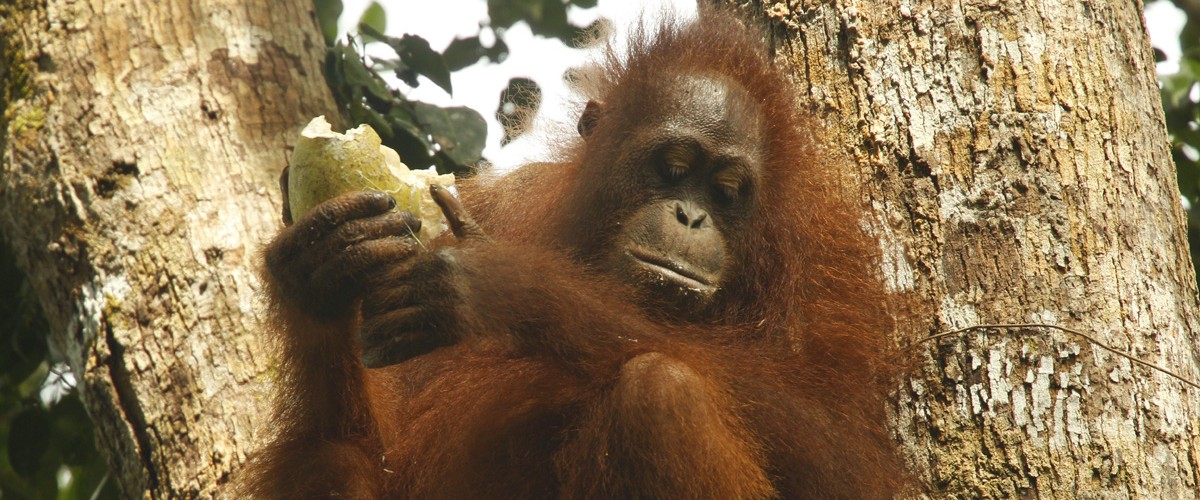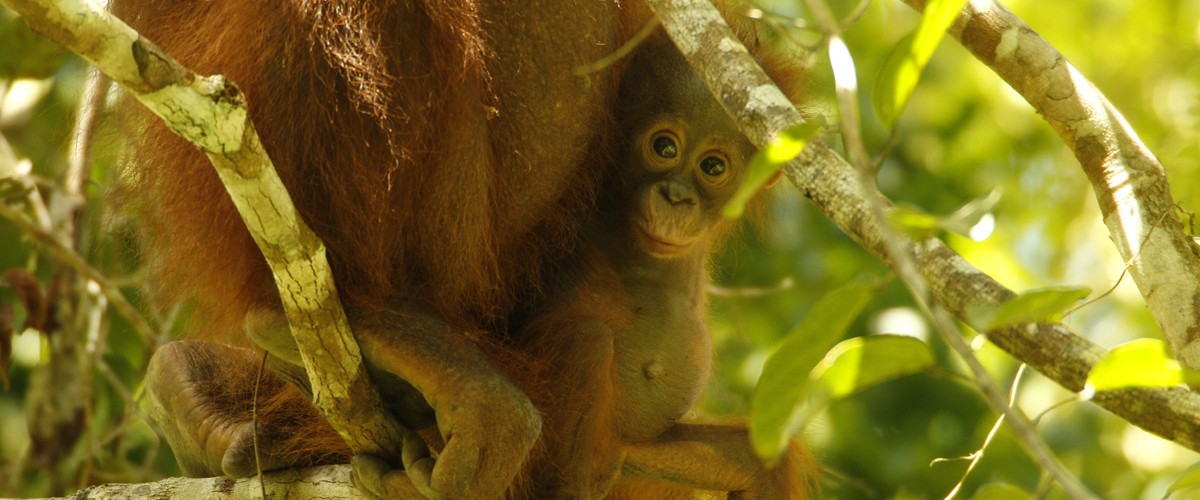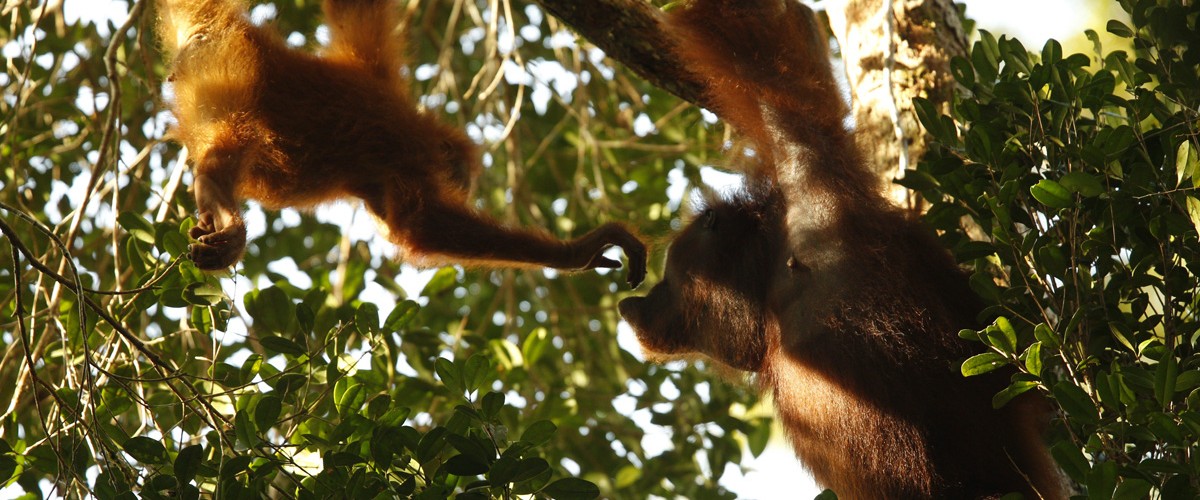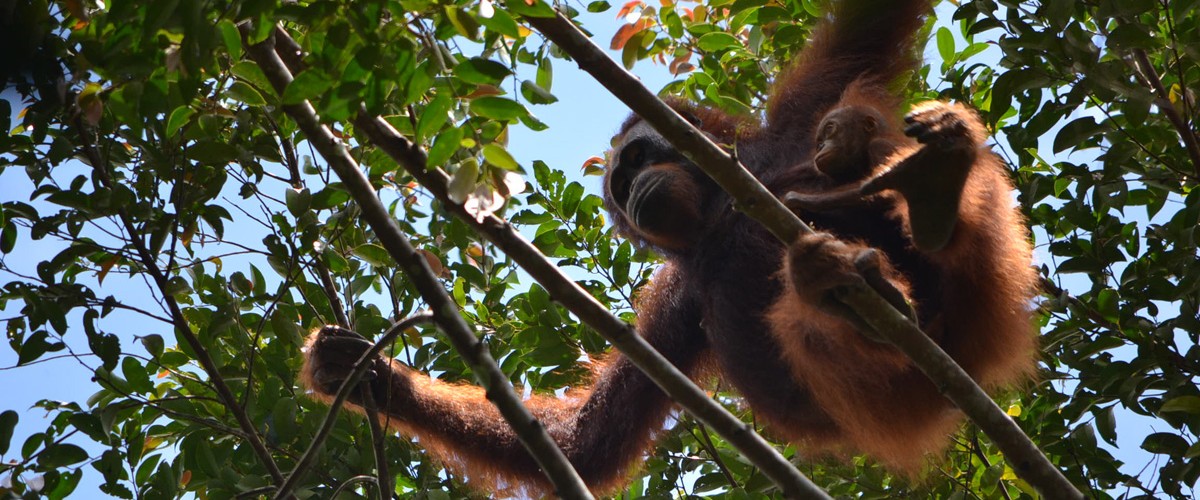By Muhammad Syainullah, GPOCP TAJAM Youth Volunteer
Hello friends of GPOCP! My name is Syainullah, but people call me Sy, and I am a four year veteran of TAJAM. TAJAM is the youth conservation group sponsored by GPOCP in Ketapang. I recently finished high school and was exploring different career paths and decided to ask Ranti, our TAJAM coordinator, if I could visit the Cabang Panti Research Station in Gunung Palung National Park. To my surprise, I was offered a one month internship to learn about the different research projects! I have always heard about the various species of animals and plants at Cabang Panti and was looking forward to spending the next 30 days exploring the 2,100 hectares of pristine rainforests surrounding Cabang Panti.
My adventure started with a two hour bus ride from Ketapang to Tanjung Gunung, the village where the trail begins. I took my maiden voyage hike with Beth Barrow, the KKL (Gibbon and Red Leaf Monkey) Project Manager, Becky Curtis, the Orangutan Project Assistant Manager, and Terri Breeden, the GPOCP Program Director. The hike from the bus stop to camp took me about five hours! I was exhausted upon arrival, but also amazed by the beautiful scenery surrounding camp and eager to meet the local staff.
Cabang Panti is currently made up of five buildings. The main building is Cabang Panti, the staff housing is known as Rumah Nyamuk (or mosquito house), the guest house is known as Rumah Litho (named after a tree genus) and then there are two project management houses. I slept in Rumah Nyamuk with the rest of the staff.
 |
| Sy collecting orangutan behavioral data on an Ipad. |
My first days began by learning about the trees, or phenology. Each morning, I would work with research assistants, Hassan and Toto. We would look at certain trees and determine if they had new leaves, or were fruiting. This helps the team determine when and where we will most likely spot orangutans. Brodie, the Orangutan Project Research Manager, taught me how to search for orangutans. We would spend a few hours walking through the forest listening for them.
Once we had an orangutan to follow, my days started very early. I would wake about 3:30 in the morning and hike to the orangutan nest with the hopes of getting there before the orangutan woke up. I learned from the assistants how and when to record the necessary behavioral data using an Ipad. I also learned some of the unpleasant tasks of the job, taking urine and fecal samples! Ideally, I would get to the nest and collect the first sample right after the orangutan had woken up. Have you ever tried to catch orangutan droppings falling from a tree? It is quite a feat! Once I had the samples, I would rush them back to the lab for processing. At first, I was shocked that Brodie was teaching me these methods and the stench did not seem to faze him. I, on the other hand, had a hard time adjusting to the smell. Fortunately, I am becoming a little more accustomed to it each day, and the mask helps.
 |
| Sy processing orangutan fecal samples. |
Perhaps, you are curious as to why we process these smelly samples? The answer is to determine nutritional intake of the orangutans. During the follows we are able to identify the foods they are eating, and through fecal analysis, we can determine how the orangutans process those foods. After all of the lab work, I am able to rest and prepare for the next day’s activities in the rainforest.
Through following the orangutans and beginning to understand their behavior, I realized that it is very important that we work to protect this species. Orangutans play many important roles in the forest, one such role is seed disperser. We also gain valuable scientific knowledge about their physiology, diet and habitat requirements.
To end this report, I am happy to share that my internship has led me to a new career! I was recently hired as a Laboratory Assistant to help with the orangutan research activities at Cabang Panti. I am looking forward to what my future in the rainforest holds for me!
 |
| Sy, (far left) with some of the research assistants and camp staff at Cabang Panti Research Station. Photos © GPOCP. |









